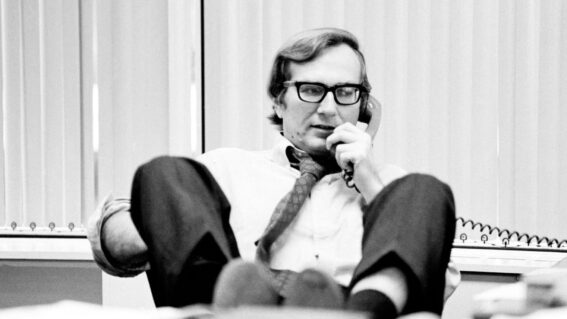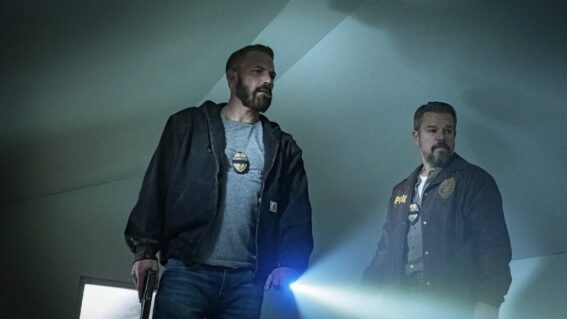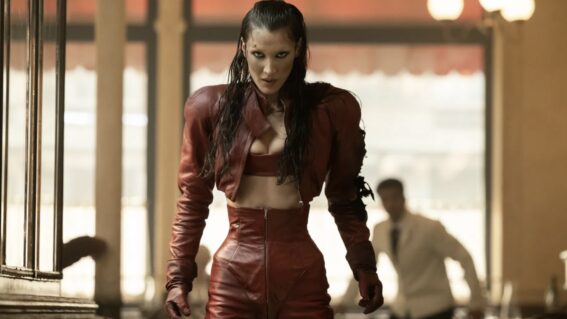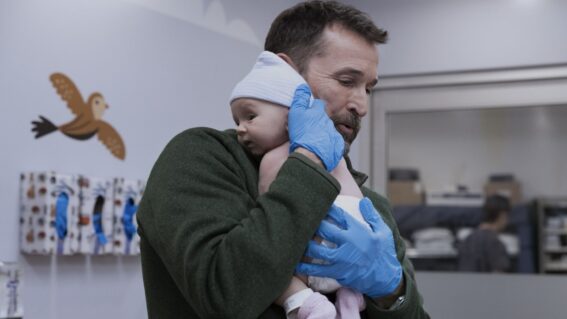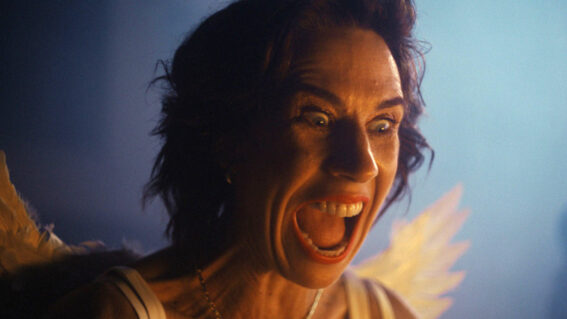The Beetlejuice movies never forget the joys of human performance
Despite the crazy Halloweenish spectactle, the Beetlejuice movies provide great opportunities for actors.
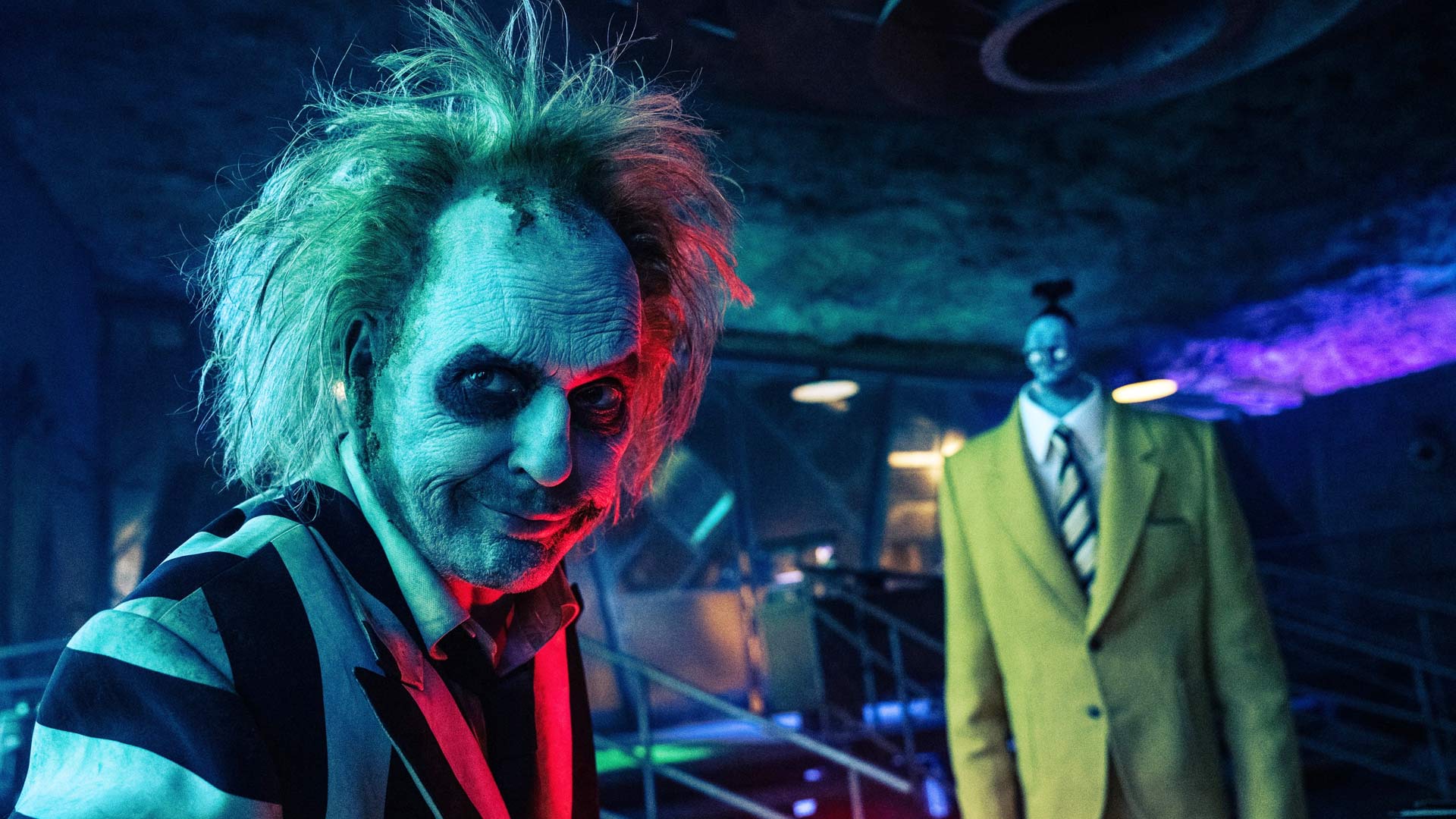
Michael Keaton is the main attraction in both Beetlejuice movies—but he’s not the only actor who seems to be having a blast, writes Luke Buckmaster.
The title “Beetlejuice Beetlejuice” references the eponymous character—a jiving ghoul played by Michael Keaten—and two thirds of the phrase by which he’s summoned. Uttering his name three times acts as a kind of verbal contract, retrieving Beetlejuice from his banished existence in the spirit world and activating his services as a “bio-exorcist.” This rather obscure line of work is essentially a form of reverse ghostbusting: instead of expunging apparitions, Beetlejuice scares humans into leaving the homes of the deceased, enabling him to unleash chaos.
It’s a fun premise, with Keaton the main attraction as the “ghost with the most,” who lives in exile in a miniature model of the town where the films are set—director Tim Burton literalising the concept of a playspace. Beetlejuice springs out of it like a hysterical sentient toy finally released from its dollhouse—off his head and out of control, raising the volume and destroying the scenery. Like in the original, the tone of Beetlejuice Beetlejuice is paradoxical: a live action cartoon. Burton is careful to only modestly upgrade the special effects, retaining a tactile retrograde look—and an emphasis on the joys of human peformance.
Rewatching the original the night before seeing the sequel, Keaton struck me as a little like Jim Carrey in The Mask: in both films the actors deliver extremely flamboyant portrayals that register despite a slathering of special effects and kooky spectacle. The performers are engaged in a tussle between their own inventions and the crazy crap flying around them, sometimes through them, their roles having berserkly chameleonic qualities. They shine despite so much else going on.
In both Beetlejuice movies, the star attraction’s presence is carefully metered out, brief early glimpes building anticipation for his bells-and-whistles emergence later on. The protagonist of the new film is actually Winona Ryder’s Lydia, the person in the original who could see ghosts and is now the host of a shonky TV show—a “physic mediator,” really cashing in on those extradimensional abilities. She’s famous but not happy, taking pills to get through the day. Ryder’s soft mannerisms and hangdog countenance counter Beetlejuice’s eccentricity.
Catherine O’Hara, returning as Lydia’s stepmother Delia, again brings a lot to the table—she’s very entertainingly shrill and highly strung as an artist and culture vulture, suffering through the perceived indignities of small town experience. The new film doesn’t extrapolate much comedic juice from a couple of its most significant new characters, including Monica Bellucci’s Delores—Beetlejuice’s ex-wife, a witch and stereotypical fairytale villain who hovers around on the peripheries, sucking up souls. Justin Theroux doesn’t bring much energy or flair either as Lydia’s flaky new age love interest Rory—a potentially funny role played flatly.
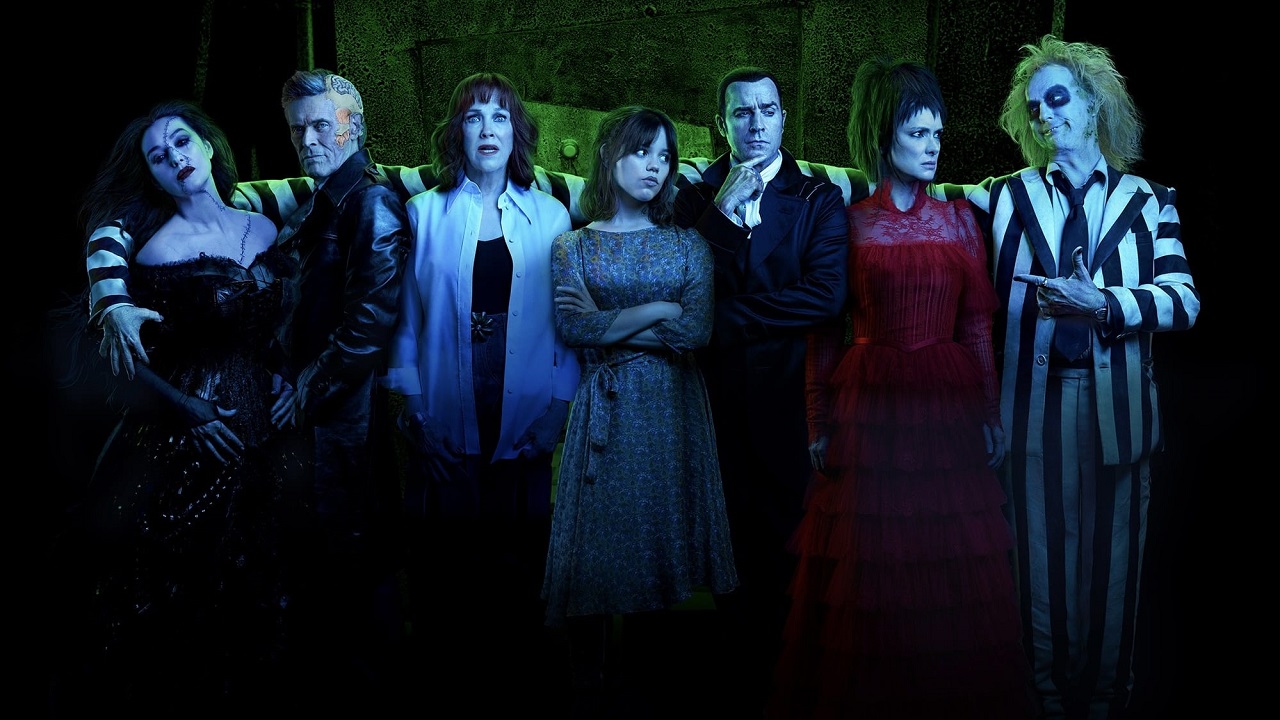
One notable exception is Willem Dafoe as Wolf Jackson, the head of the “Afterlife Crimes Unit.” Jackson was a dodgy actor who played a detective before he died, and is now playing a detective in the afterlife, while also fulfilling detective duties, meaning he sort of is and sort of isn’t a detective. This amusingly absurd concept has him both investigating crimes and doing the work of cut-rate actors, addressing his team by reciting lines held up by an assistant. A little more screen time for Dafoe could’ve worked wonders; it’s a good role, but his wings feel clipped.
Beetlejuice Beetlejuice doesn’t extrapolate from its supporting cast the same level of charm as its predocessor. In the original, nowhere was this charm more apparent than in the famous Day-O (The Banana Boat Song) scene: a preposterously odd and funny moment. Congregated around the table for a dinner party, six characters—including Dalia and her husband Charles (Jeffrey Jones)—suddenly burst into a renditioned of the aforementioned song, Dalia miming the opening lines (“day, me say day, me say day, me say day…”) before the others are lifted from their seats and forced to dance, operated by unseen ghosts attempting to terrorize them.
Amusingly, it has the opposite effect; these city slickers are accustomed to chaos and relish the out-of-body spectacle. As do the actors, in a deceptively difficult scene to get right, requiring them to perform choreographed moves while pretending to have no control of their bodies. The sequel has a comparable scene, when characters do more or less the same thing, but the magic isn’t quite there; hewing so closely to the original makes it feel dangerous close to box ticking. Still, the actors seem to be having fun, here and throughout—and that fun is contagious.









